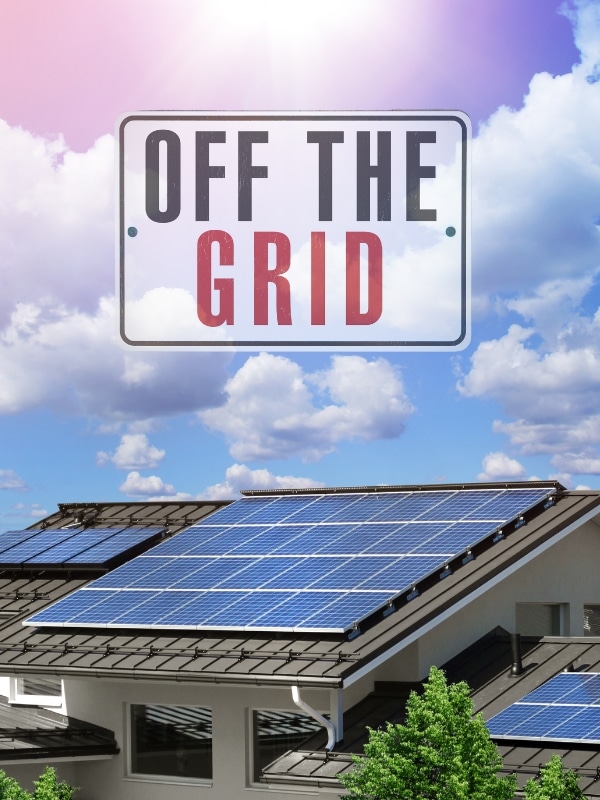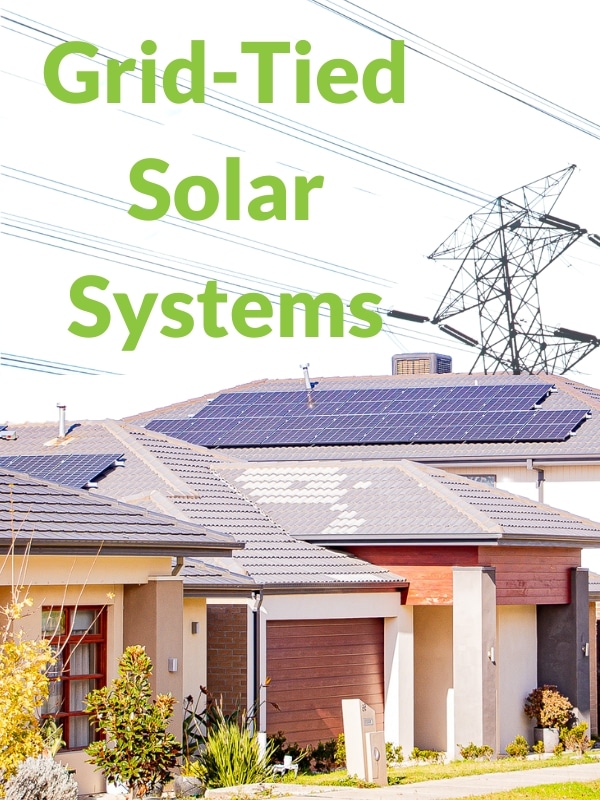Evaluating Off-Grid vs Grid-Tied Sun Techniques
With abundant sunshine, Australia is a prime location for harnessing solar energy. But when it comes to solar systems, you have a key decision: off-grid vs. grid-tied. Understanding the differences between these solar system types will help you choose the one that best suits your needs and lifestyle.
Are you looking to save money on your electricity bills and reduce your carbon footprint? Solar energy is the perfect solution! Energy Matters can help you get up to 3 FREE solar quotes from pre-qualified and vetted solar installers in your area.
Energy Matters is the leading supplier of solar quotes in Australia due to its vast partnership network of high-quality installers. With Energy Matters, you can be sure you’re getting the best possible deal on solar energy.
Off-grid solar systems: Self-reliance with investment
Off-grid solar systems are completely independent of the electricity grid. They are ideal for remote locations where connection to the grid is unavailable or unreliable. Here’s what you need to know:

- Components: Solar panels, a battery bank or solar battery storage, a charge controller, and an inverter. The solar battery is crucial for storing excess solar energy generated during the day to power your home or business at night and during low sunlight.
- Pros: Energy independence, immunity to power outages, and environmental benefits.
- Cons: Higher upfront cost due to battery storage, requires careful energy management to ensure enough power is available, and ongoing maintenance of batteries.
Grid-tied solar systems: Simplicity and cost-effectiveness
Grid-tied solar systems connect to the electricity grid, offering a simpler and more affordable option. Let’s explore the key points:
- Components: Solar panels, inverter, and net metering (optional). Excess solar energy produced during the day can be exported to the grid, earning you credits on your electricity bill. You can then draw power from the grid at night or on cloudy days.
- Pros: Lower upfront cost, minimal maintenance, and easy to install.
- Cons: If you rely on the grid for backup power during outages and potential feed-in tariff changes, you may need more support in terms of energy generation.

Solar system comparison: Finding the right fit
Here’s a table summarising the key differences to aid your solar system comparison:
Feature | Off-grid solar systems | Grid-tied solar systems |
Grid connection | Not connected | Connected to the electricity grid |
Battery storage | Large battery bank required | It may or may not include battery backup |
Initial cost | Higher | Lower |
Energy management | Crucial, requires careful planning and monitoring | Less critical |
Maintenance | More maintenance is required, especially for solar batteries | Less maintenance required |
Energy independence | Yes | No (Solar energy storage is optional during power outages) |
Feed-in tariffs | Not applicable | Can benefit from feed-in tariffs. Learn more about: |
Pros | Energy independence: You control entirely your power generation and consumption. Resilience: Power outages won’t affect you if your system is sized correctly. Environmental benefits: You’ll maximise your reliance on clean, renewable energy. | Lower cost: Grid-tied systems are generally less expensive as they don’t require extensive battery storage. Lower maintenance: The grid acts as a backup power source, reducing reliance on battery maintenance. Feed-in tariffs: In many areas of Australia, you can earn credits for excess solar energy exported to the grid. |
Cons | Higher cost: Off-grid systems require significant battery storage, making them more expensive than grid-tied options. Maintenance: You’ll be responsible for system maintenance and sufficient energy storage. Limited power: Off-grid systems may only be suitable for high-powered appliances with significant investment. | Grid dependence: During power outages, your system won’t function without a battery backup. Limited self-sufficiency: You still rely on the grid for some of your power needs. Feed-in tariffs can fluctuate: The value you receive for exported solar energy can change over time. |
Use Energy Matters’ easy-to-use solar power and battery storage calculator to determine the size of your solar system with storage! Our solar calculator will generate performance information and potential savings.
Energy Matters can send this information to 3 of our pre-vetted and trusted local installers in your area to receive obligation-free solar quotes.
Choosing your solar path
The ideal solar system choice depends on your priorities and circumstances. Consider these factors:
- Location: A grid-tied system isn’t an option if you live off-grid.
- Budget: Off-grid systems have a higher upfront cost due to batteries.
- Energy needs: Evaluate your daily and seasonal energy consumption.
- Lifestyle: Do you prioritise energy independence or a simpler setup?
Getting expert advice
For most Australians with access to the grid, grid-tied solar systems offer a cost-effective and user-friendly solution. However, off-grid solar can be a worthwhile investment if you live in a remote location or value complete energy independence.
Ultimately, the best solar system for you depends on your individual needs and priorities. Consider your location, budget, and energy consumption habits before deciding. Consulting with a qualified solar installer can help you determine the best solar system comparison for your Australian home and business.
Ready to upgrade your solar systems and take your energy savings to the next level? Embrace the energy efficiency revolution by upgrading your solar systems and adding a battery or solar inverters with Energy Matters.
With Energy Matters’ 3 free solar quotes, you can compare plans from pre-qualified and vetted installers in your area and find the perfect solution for your home and business. Harness the sun’s power and save money on electricity bills while reducing environmental impact. Let Energy Matters guide you towards a brighter, more sustainable future.
Ready to go solar? Get an instant assessment
To find out how much a solar system with storage or even an EV charger will cost, try Energy Matters’ easy-to-use solar power and battery storage calculator! It will generate performance data and possible cost savings.
Energy Matters can forward your information to 3 trusted local installers in your area to obtain free, no-obligation solar quotes.
Find out how much you can expect to pay for solar
The form can be filled in the actual website url.
Ready to find out more? Get FREE quotes for solar, batteries + more
The form can be filled in the actual website url.
*Prices quoted are to be used as a guide only and do not factor in state and other rebates and incentives. Includes STC discount.
Our Energy Matters CEO, Roshan Ramnarain, will feature stunning homes installed with the latest solar technology every Saturday at 5:00 p.m. on Open Homes Australia on the 9Life channel. Be sure to watch this show; you won’t want to miss it!

The post Comparing Off-Grid vs Grid-Tied Solar Systems appeared first on Energy Matters.




No Comments